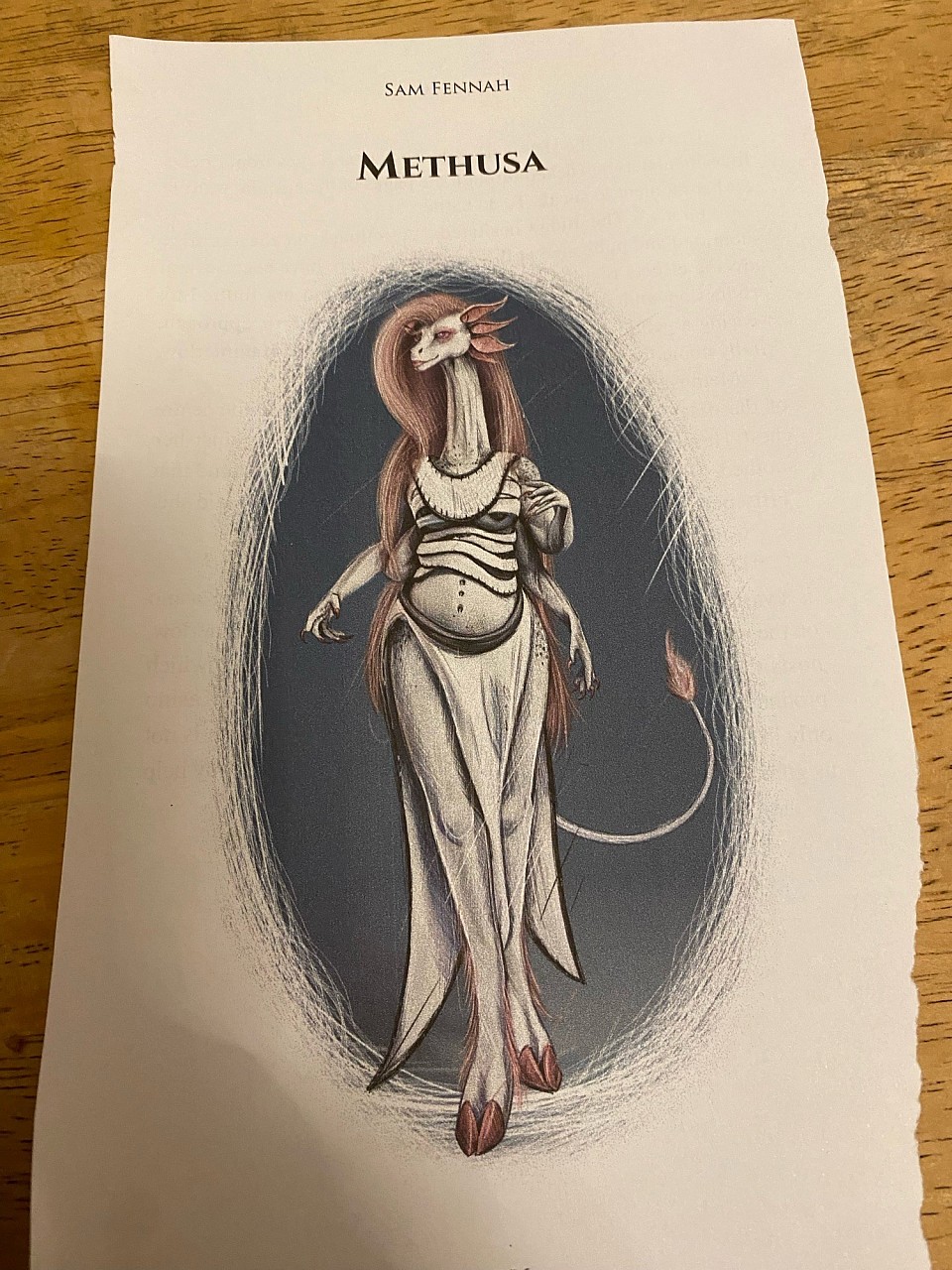-ˋˏ ༻ 1 ༺ ˎˊ-
Character Interview
Here I will ask some questions for the characters as I develop their personalities
Do you believe that when raising a child it would be preferable for them to end up kind and lowly than successful but cold-hearted?
Do you believe it is ever justifiable to invade and militarily occupy another country that has not harmed or threatened another?
Do you believe that providing negative feedback to peers should be done sparingly and politely? To not offend with bluntness?
Do you agree that certain punishments are so cruel and violent, that even the most evil and dangerous individuals do not deserve them?
Should society encourage children to be fully obedient to their parents and defer to their decisions until they reach maturity?
Do you believe there is, or is not an end goal noble enough, or a circumstance desperate enough to ever justify directly sacrificing the lives of unwilling innocents?
Do you believe that those who have earned large amounts of wealth should be obligated to provide some of it towards public welfare and the less fortunate members of society?
Do you believe the pursuit of raising a family, and a career that helps achieve that goal is more noble than pursuing a child free path?
Do you believe citizens should ever be denied the right to nonviolently assemble and protest in public spaces, even if it is likely to progress into rioting?
Do you believe that to ensure wrongdoers experience discipline through retributive punishment is an essential component of justice and to ensure the proper functioning of a society?
How do you feel about protecting the people’s rights to privacy from surveillance and espionage? Should it be a greater priority than using those tools to catch terrorists or criminals?
Do you agree that although taste in art, architecture, and style is technically subjective, it’s important that a society try to uphold certain standards of beauty and sophistication?
Do you believe it’s better if a society promotes the idea that people should work through their mental health problems by talking about them openly? Or do you believe we should try to hide and ignore them?
Do you believe it is important for countries to pursue a level of economic and military self sufficiency to avoid dependency on others?
Do you agree that it is a sign of a deeply flawed society when someone can inherit a large sum of wealth or power without having to work for themselves, while others inherit very little to nothing?
Do you believe that all citizens charged with a crime, no matter how obviously guilty or problematic they are, should have the right to a fair and impartial trial, fair representation, and due process?
Should the primary goal of governments be to prioritize the interests of their country and those who currently live in it, rather than pursue the wellbeing of humanity?
Do you believe a society works at its best when the majority of its members share similar values, beliefs, social norms and mannerisms? Should newcomers be expected to adopt these values before joining?
Do you agree that if an external threat ever attempts to exploit one’s homeland and its people, every citizen should be willing to stay behind and sacrifice their lives to defend it if it’s called upon?
Do you believe that some people, on the basis of talent, risk taking, hard work and contributions, be more deserving of wealth than others?
Do you agree that if a citizen enjoys quality of life, culture and the civilization of their country more than others, they should support actions that increase the external might, power, and influence on the world stage?
Do you believe certain inanimate objects should be treated as sacred? Do you agree that it is immoral to disrespect them even when no property damage has been done and nobody was around to witness it?
Do you consider someone who has good intentions, but also considered to be a social misfit, week, meek, and dull witted deserving of the same courtesy and respect as their peers rather than be treated as a burden on society?
Should mentally sound adults have the right to decide what they inject into their own bodies, regardless of public health concerns?
Do you believe that a government should be prohibited from seizing the property of a law biding citizen for state planning without their consent? During peacetime?
Do you believe a nation should be a democracy, where leadership is decided by public election, and every citizen has the right to vote? Is this more preferable than a state governance where leadership is appointed from the top down instead?
Is it in bad taste if a citizen publicly questions the technical knowledge of scientists, the bravery of those in dangerous lines of work, or the work ethic of the working class? If they themselves have not achieved similar feats?
Do you agree that if the current governing system has proven itself to be competent at ensuring the wellbeing of its citizens, all of its laws should be followed to preserve social stability, including those that seem arbitrary or one that someone disagrees with?
Do you believe that certain activities are so disgusting that they are deeply immoral even if they are consensual, harmless, and done in private?
Do you agree that a society is most admirable when businesses and institutions follow a culture of perfectionism?
Do you believe it is ethical for a government to place restrictions on what ideologies, beliefs and opinions can and cannot be expressed within a social setting or academia? No matter how dangerous they may be considered?
Is it socially acceptable for a respected, high status authority figure to demand preferential treatment from the public?
Should we prefer the public to be aware of a hard truth concerning them and have it result in outrage and instability rather than keep them under ignorance?
𖤓
━━━━━━━•°•°•❈•°•°•━━━━━━━
Type One Personality
How does a type one personality answer these questions?
The first lineage of anything in life is believed to be the most telling, so therefore these people have trained themselves to actively search for the first lineage of information, and to judge it as it began instead of what it has later becomes. They use the example of a small child being the most pure as a means to determine the quality of all things. Another example of this would be if there was a news report, only the first initial report is listened to everything afterwards has been corrupted. If you’re asked a question and you pause for too long then your answer is silence and no need to listen to what you have to say after a long pause. If you were to prepare a speech, they would not listen, and for a politician to read from a teleprompter is unacceptable and they will not listen to any of it because there was time for it to be corrupted.
It is believed that in all things there is only one strand of truth. It is believed that this one strand is a guide for the creation and understanding of new information. The “strand of truth” is what is believed to me the message in the conversation
Ones behaviour and environment makes a person who they are publicly but also influence their mind and their heart. It is important to take the steps to change their behaviour and seek control over their environment, either through adaptation to that environment or to influence it to change if it is unacceptable.
Type 1 personalities are generally calm and not overly aggressive in situations unless the situation calls for such behaviour. One thing however, is they consider the idea that if you’re someone who is different you should try to bond with the majority.
Type one personalities are pro military and police force and are in support of fighting for the sake of the species.
It is someone’s right to travel down their path in life, freedom of choice and freedom of location if where they are currently is unacceptable.
Adaptability is important so that a being can adjust to two different takes on a situation. To see a situation from both sides and act accordingly.
They understand that beings naturally participate in groupthink, while adaptation is important, someone who only follows groupthink is not a contributing member of society
It is understood that people naturally gravitate towards information they find pleasant and deny what is inconvenient to them. For a type one accepting a hard truth is a process.
It is understood that when releasing hard truths type one believe it should be done through the process of “activating” by releasing a detail and “repressing” by holding back a detail. The process they believe creates more information as you prepare a society for disclosure
The same process is used to bring about social change
𖤓
──── ·:*¨༺ ♱✮♱ ༻¨*:· ────
⟁
Interview
Do you believe it is morally wrong to mistreat one’s own body or live an unhealthy lifestyle?
The longer someone lives, the more corrupted they become, but why speed up the process? Those around you should be encouraging you to keep purity as long as possible. I see neglecting one’s health as a sign of weakness in a person. If that person’s environment gives them no choice but to ignore their health, they should change that environment if possible. If it’s not possible, their behaviour is forgivable but not to be celebrated. It’s punishable but not by others, your own body will punish you. I don’t think it’s necessarily immoral but it’s something shameful.
Do you believe males and females should have equal access to the same opportunities?
Competent is what matters, deserving is what matters. A competent person should not be denied because of reproductive organs. A competent person is original in their thought process and can bring fresh ideas to their environment, a leader who can easily adapt to an environmental situation without losing themselves in groupthink. People who stay in groupthink are not competent and deserve to be denied opportunity. They need to have the right skills, the right body and the right brain for their goal in mind to be possible
Do you believe it is important for societies to preserve pride in their traditions and heritage?
We should have pride in what was original and preserve it as it was regardless of changes in social norms and opinion. Groupthink does not define past history, you can’t just decide to pretend it never happened because it’s unpopular. We celebrate accomplishment, we celebrate feats and strive to preserve the original form.
Do you believe that nobody should be denied the ability to reproduce? Even those with serious inheritable diseases?
Reproduction is the primary function of a being. You should reproduce once and only once. But, we are beings of free will and nobody can decide for us. I might add that it’s preferable if both partners have vastly different DNA
Do you feel it’s important for professional environments to uphold formality and diplomatic etiquette?
Every place of business and every institution has a vision to uphold. So, absolutely yes as long as it does not alter that vision
Do you believe people should always strive to reciprocate any favour they willingly accept from others later on, even when doing so is not expected?
Is it shameful to purchase something purely based on its luxury status or trendiness?
Very much so, those who start a trend are just making copies of themselves, and those who follow them just for the sake of following them are empty people. They are no longer a person, they are an advertisement
Do you believe large societies need hierarchy and established leaders to function cohesively?
Do you believe casual sex between people who are not in a committed romantic relationship should be heavily discouraged?
That not for a society to decide, although the more partners you have, the less serious I will take you if you come to me looking for a relationship
Do you believe it’s important for families to stick together and uphold unity? Even when it’s members don’t get along?
Do you believe that a society that has a belief in religion or spirituality is preferable to an atheistic one?
A decent society should have both seeing that a society that believes can influence a culture, but it is only as good as its oldest text and should not be lost in translation. An athletic side, has the purpose to look at the facts and keep society grounded.
━━━━━━━•°•°•❈•°•°•━━━━━━━
⟁
Type Two Personality
How does a type two answer?
━━━━━━━•°•°•❈•°•°•━━━━━━━
⟁
Type Three Personality
How does a type three answer?







